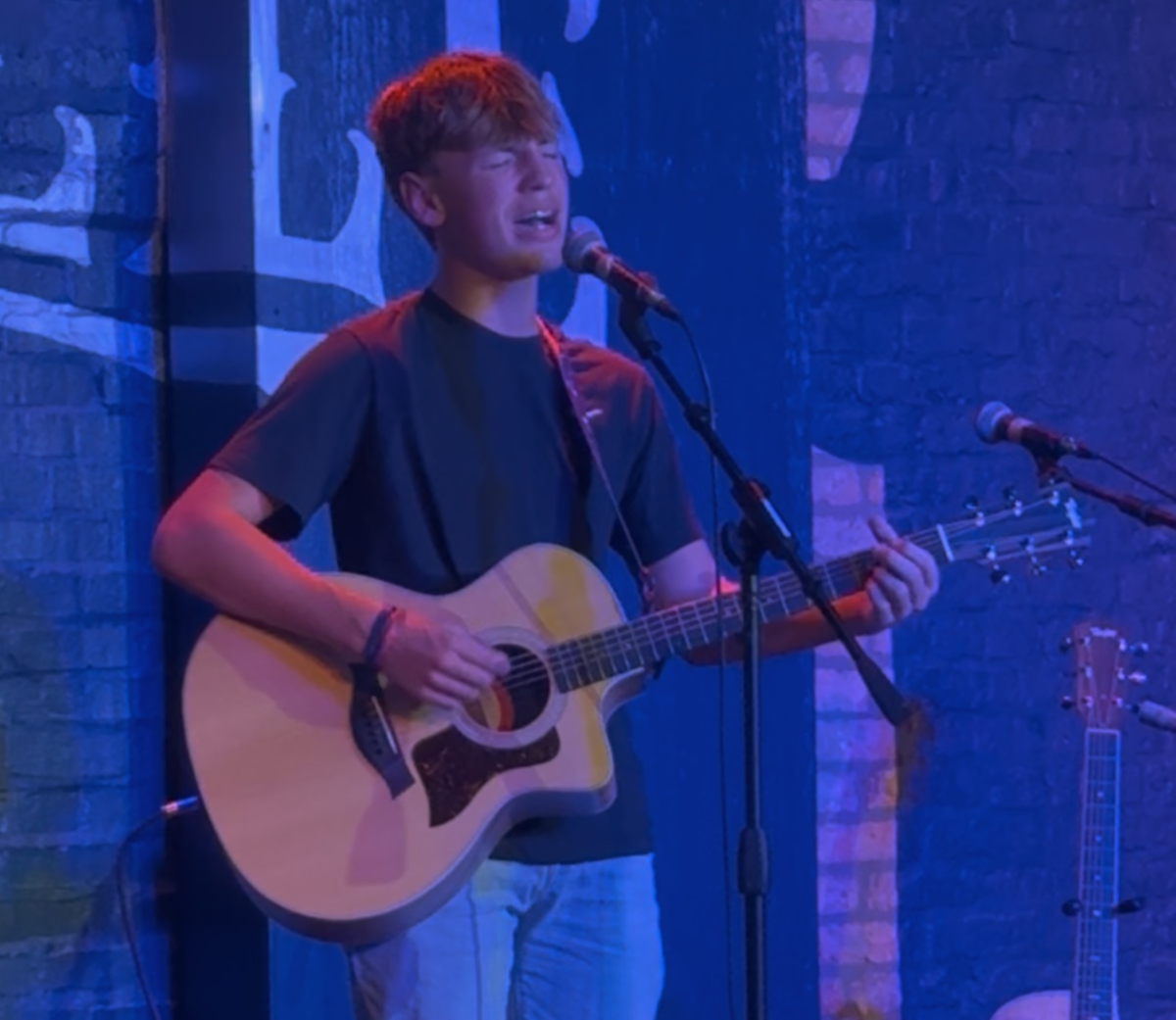The innovative Paul Taylor Dance Company excels in styles and narratives — and brings a tear to the eye, too
After a weekend at Boston’s Boch Center, the dance group heads to Philadelphia (April 21-22) and Los Angeles (April 28-30)
Maria Ambrose (left) and Devon Louis perform “Somewhere in the Middle” as part of the Paul Taylor Dance Company’s nationwide 2023 spring tour.
April 18, 2023
A summer party set to classic jazz, a story told with Bach, and World War II as told through the jitterbug and the Andrews Sisters. All driven by a group of premier dancers with lyrical, jazz, and swing dance.
Over the weekend of April 14, the renowned Paul Taylor Dance Company took to the stage of Boston’s Boch Center Shubert Theatre as part of the company’s national tour and the 2023 Celebrity Series of Boston, immersing audiences in an interweaving of dance styles, narratives, and perspectives on power, relationships, and war.
The Celebrity Series of Boston brings a diverse array of artists to iconic Boston venues every year, including the New York City-based Paul Taylor Dance Company. Coined by the New York Times as “one of the most exciting, innovative, and delightful dance companies in the entire world,” the company was founded in 1954 by Paul Taylor, an Oscar nominee, Emmy Award winner, and veteran of dance legend Martha Graham’s company. Known for his merging of various dance styles into pieces that spotlight sometimes-controversial issues, such as war and morality in relationships, Taylor died in 2018 with a National Medal of Arts from President Bill Clinton, the Légion d’Honneur from the French government, and 147 dance pieces choreographed by him for the company. Current artistic director Michael Novak, a former company member, was handed the torch to run the group upon Taylor’s death.
The show was broken up into three acts, the first with the name “Somewhere in the Middle.” The new piece, choreographed in 2022 by Amy Hall Garner, creates a middle ground for a variety of dance styles and aesthetics to merge, presenting a tropical take on the 1930s swing dancing scene. To the music of jazz greats Count Basie, Sarah Vaughan, Duke Ellington, and Bill Evans, the dancers sprinkled traditional swing steps into fluid lyrical routines, backed by the sharp movements of modern jazz.

The dynamic dance witnessed constant change, as dancers entered and exited the stage for brief solos, duos, trios, and ensemble parts, which included much partnerwork. Around halfway through the dance, the music slowed and a lyrical duet took place, breaking the poppy and upbeat trend. This variety in dance, coupled with the dancers’ colorful costumes and classic jazz music, succeeded in bringing together the Swing Era, modern lyrical and jazz dance, and a beachy color scheme without them clashing too hard or allowing any one aspect of the dance to overpower the others. And visual aid aside, the dancers showcased tremendous talent through their equal mastery of all dance styles present, lucidity in combinations either in synch or in canons, and precision in partner stunts, whether between two dancers or in groups.
The second act reclined into the realm of lyrical, lyrical jazz, and ballet, set to Brandenburg Concertos Nos. 6 (movements 1& 2) and 3 by Johann Sebastian Bach. Choreographed by Taylor and first performed in 1988, the piece (titled “Brandenburgs”) had a clear narrative revolving around relationships and power dynamics.
An ensemble of four danced in praise and submission around three soloists, representing desirable women who were all trying to impress one man, portrayed by company member John Harnage. He sauntered between duets with the women as though there was no need to settle on one, touching on the different kinds of relationships one can have. This development backed by how the ensemble of four bowed down to the three women, who bowed down to Harnage’s character, created a social hierarchy of three classes parallel to many facets of society.

The act was engaging in two ways: It told a translatable story and highlighted the dancers’ abilities from their ballet foundations to standout skills. As well as Harnage, each of the female soloists (Maria Ambrose, Eran Bugge, and Madelyn Ho) were given time to showcase their signature moves, all to rapid applause from the audience.
Taylor choreographed the show’s third act, “Company B,” in 1991 to shed light on the often overlooked experiences of the American homefront during World War II. The act was set to a series of songs from the Andrews Sisters, an iconic trio that toured with the United Service Organization (USO) during WWII, performing patriot songs. The act opened and closed with their famed song, “Bei Mir Bist du Schön,” featuring the show’s full cast doing classic swing moves but in a slower, contemporary context.
The opening number then dissolved into the “Pennsylvania Polka,” spotlighting a smitten couple (Kristin Drauker and Austin Kelly) ballroom dancing, while male dancers as American soldiers abroad fight in the background in slow motion, representing the 1940s coexistence of love and swing culture with the brutality of war.

“Tico-Tico” brought the historically-overlooked topic of physical and psychological trauma of soldiers into the conversation, with a solo from Alex Clayton, who acted as a veteran with a tick. “Rum and Coca-Cola” and the catchy “Oh Johnny, Oh Johnny, Oh!” made comedic fun out of the desire among soldiers and American women for romance, although each in environments lacking in partners of the opposite sex. In the same jocular vein, “Joseph! Joseph!” toyed with the social pressures for couples to rush to marriage immediately upon the man’s return from war. The vintagey number included classic jitterbug moves, partnerwork, and entertaining narrative.
The poignant concepts of loss, fear of loss, and the miserable separation of loved ones during war were underlined in the lyrical combos of “I Can Dream, Can’t I?” and “There Will Never Be Another You,” where Ambrose and Devon Louis danced a heart-wrenching duet about a couple parting for war, possibly causing one reporter to shed a tear.
“Company B” is a masterpiece for approaching the American homefront of World War II, not from a political perspective or from the patriotic, certain-of-victory image of classic propaganda, but from a 360-degree scan of how the war both broke and enriched the hearts of soldiers and their loved ones. It takes the music that once boosted the morale of the American people to highlight what they were actually feeling, both physically and emotionally. It also accentuates what women at the time – who were mostly revered as just factory girls, fly girls, nurses, volunteers and optimistic belles writing letters – were internally grappling with, giving a platform to their experiences. But the act does highlight how war can bring out some bests in humans, from fortified love to the wholehearted hope for reunion to the unparalleled brotherhood of soldiers. And the dancing – the driving force of these messages – seamlessly brought together the extremes of contemporary, lyrical, and lindy hop, giving dancers the opportunity to show off both difficult and stylish steps, as well their abilities to act and create wide-ranging and effective narratives every three minutes. A complete performance.
After their time in Boston, the Paul Taylor Dance Company will continue its national tour to Philadelphia and Los Angeles. Once completed, the company will settle back down at its headquarters in Manhattan’s Lower East Side to put together more stellar, cutting-edge, and impassioned pieces.

–April 17, 2023–























